The Acropolis Of Alatri
Alatri is an Italian town located in the province of Frosinone in Lazio.
It was known in ancient times as Aletrium, one of the oldest centers of Lazio, which was one of the main cities of the Italic people of the Ernici and one of the so-called Saturnian cities (five mythological cities believed to have been built by God Saturn himself with the aid of his demigod sons).
It is mostly known for the pre-Roman acropolis surrounded by megalithic walls, well preserved, of which the Porta Maggiore stands out for its grandeur, followed by the Porta Minore or Porta dei Falli.
The Acropolis of Alatri, at the heart of the historical center of the eponymous city, is located on top of the hill where the city is located.
The whole citadel is surrounded by megalithic polygonal walls, also known as cyclopean walls, in the classic mortarless style.
Reconstruction with considerably smaller stones loosely placed on top or in the middle of the megalithic walls by later civilizations that settled at the site can easily be spotted throughout the whole area.
Ferdinand Gregorovius, a German historian, upon visiting the city, wrote:
“When I found myself in front of that black titanic construction, preserved in excellent condition, as if it did not count centuries and centuries but only years, I felt an admiration for human strength far greater than that which inspired me the sight of the Colosseum … a race that could to build these walls, it must already have had an important culture and orderly laws”.
As a matter of fact, the remains include an incredibly high wall made of fifteen megalithic blocks placed one on top of the other, with the cornerstone having a bas-relief of a winged figure.
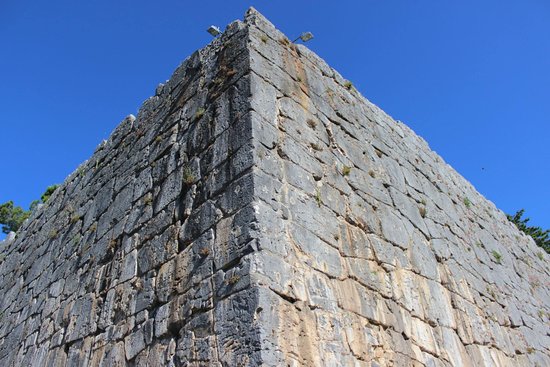
The historical collocation of the building of these walls was lost over the millennia, and no exact reconstruction was eventually made.
The Acropolis is in turn enclosed in a second, wider megalithic polygonal wall, which is over two kilometers long and almost entirely preserved, covering an area of about 25 hectares.
These walls still puzzle archaeologists and modern engineers since they are characterized by perfect grafting of the wall structures in an impervious and chaotic natural environment.
Along this outer circle of the walls, in correspondence with the oldest and most important road layouts of the city, there are five access gates, originally all surmounted by monolithic architraves, of which the only one preserved in the original structure is Porta San Benedetto.
Two of the gates have an important mathematical property: the height/base ratio coincides, with a good approximation, to the golden section.
The Porta Maggiore, located on the southern side of the walls, is 4.5 meters high and 2.68 wide and has a monolithic architrave of surprising dimensions (4.0×5.13×1.3 m, weight estimated at 27 tons), second in Europe only at the Lion Gate of Mycenae.
The Porta Minore or Porta dei Falli or also the Grotta del Seminario, located on the northern side is much smaller (2.12 x 1.16 m) and leads into a narrow ascending corridor, perfectly preserved, covered with progressive monoliths overhang: a roofing system that is found only in the interior of the pyramid of Menfi.
The dating of the walls has been much discussed without any general consensus.
Near the Porta Maggiore, there are three large rectangular niches in the walls, approximately 90 cm deep, also called “the Sanctuaries” whose function remains obscure.
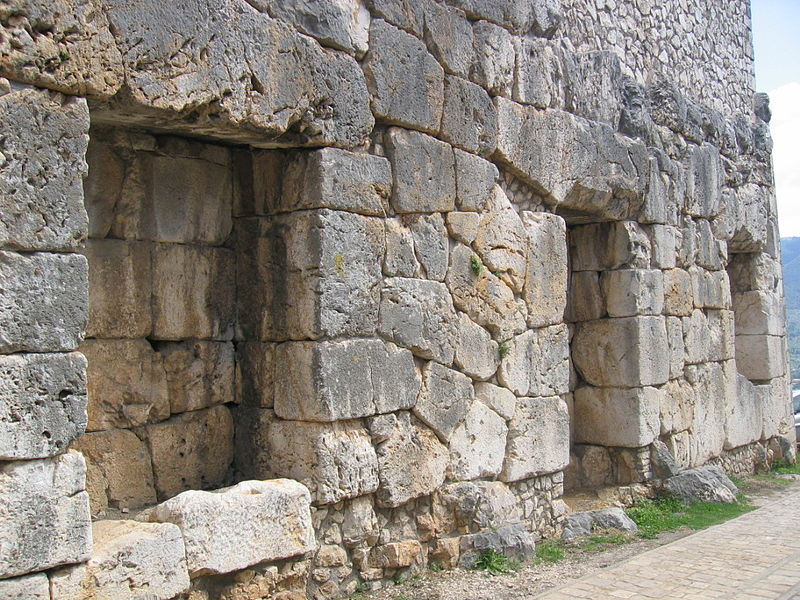
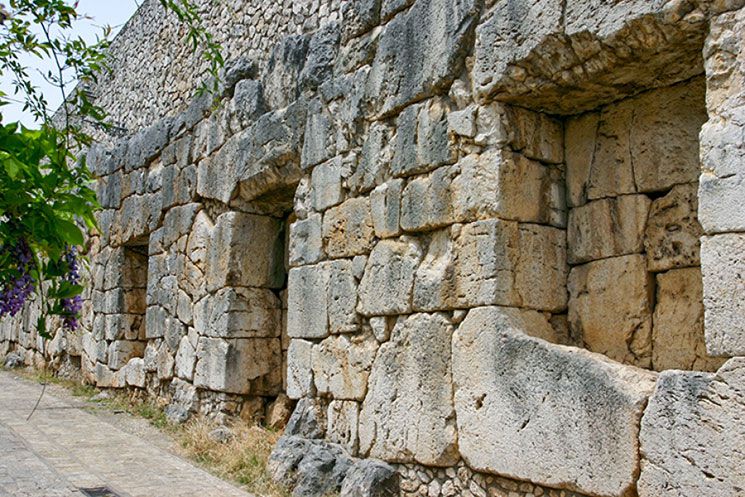
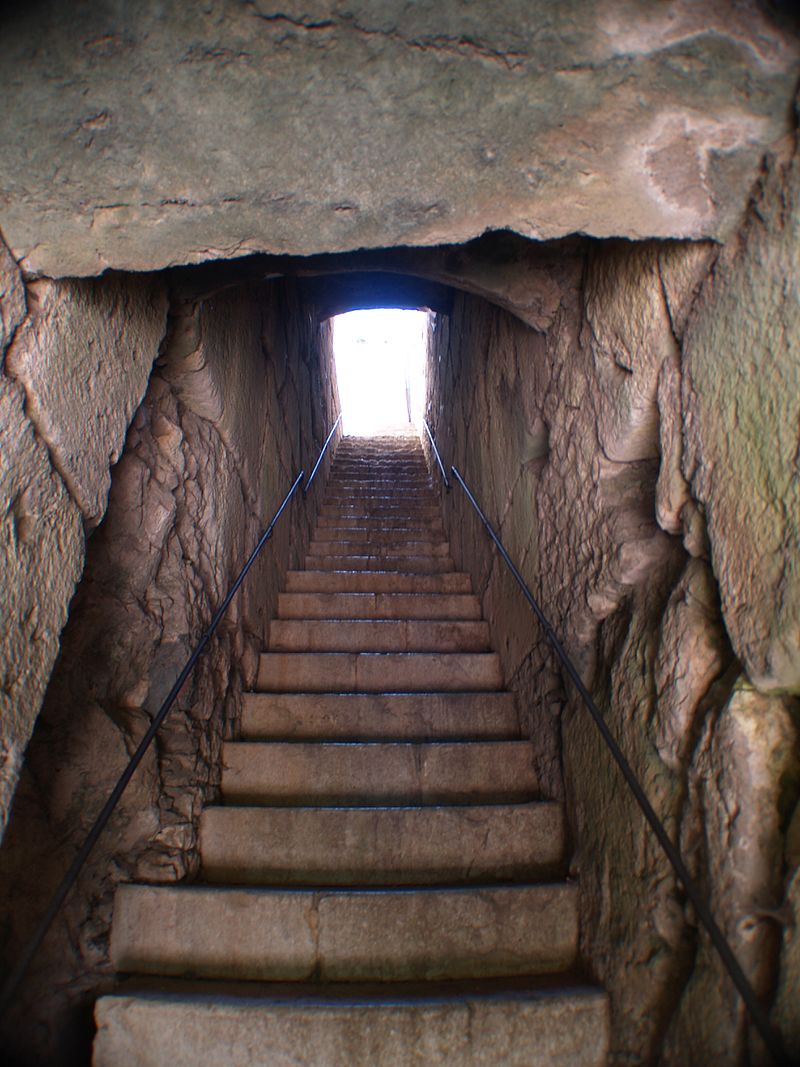
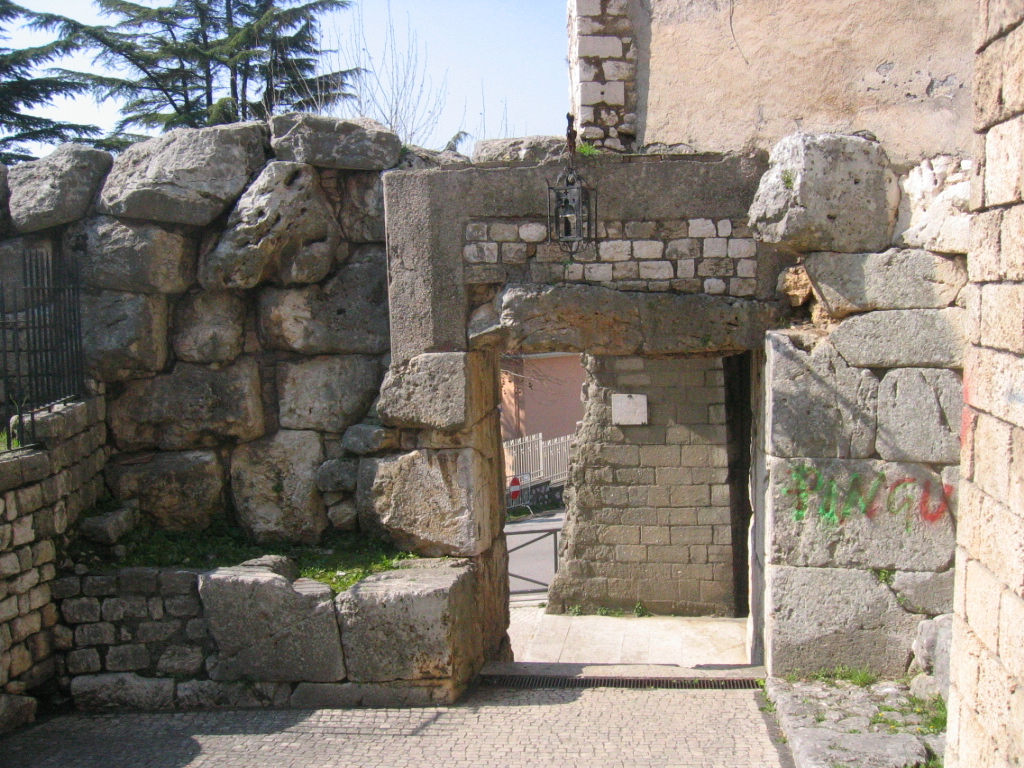
The Archaeostronimcal Alignments
The fortification also presents archaeoastronomical alignments, since the perimeter of the walls matches exactly with the Gemini constellation during the summer solstice.
Specifically, the profile of the plant reproduces, redesigned in a mirror, and adapted to the orography of the territory, the internal part of the constellation of Gemini when it is very close to the maximum declination.
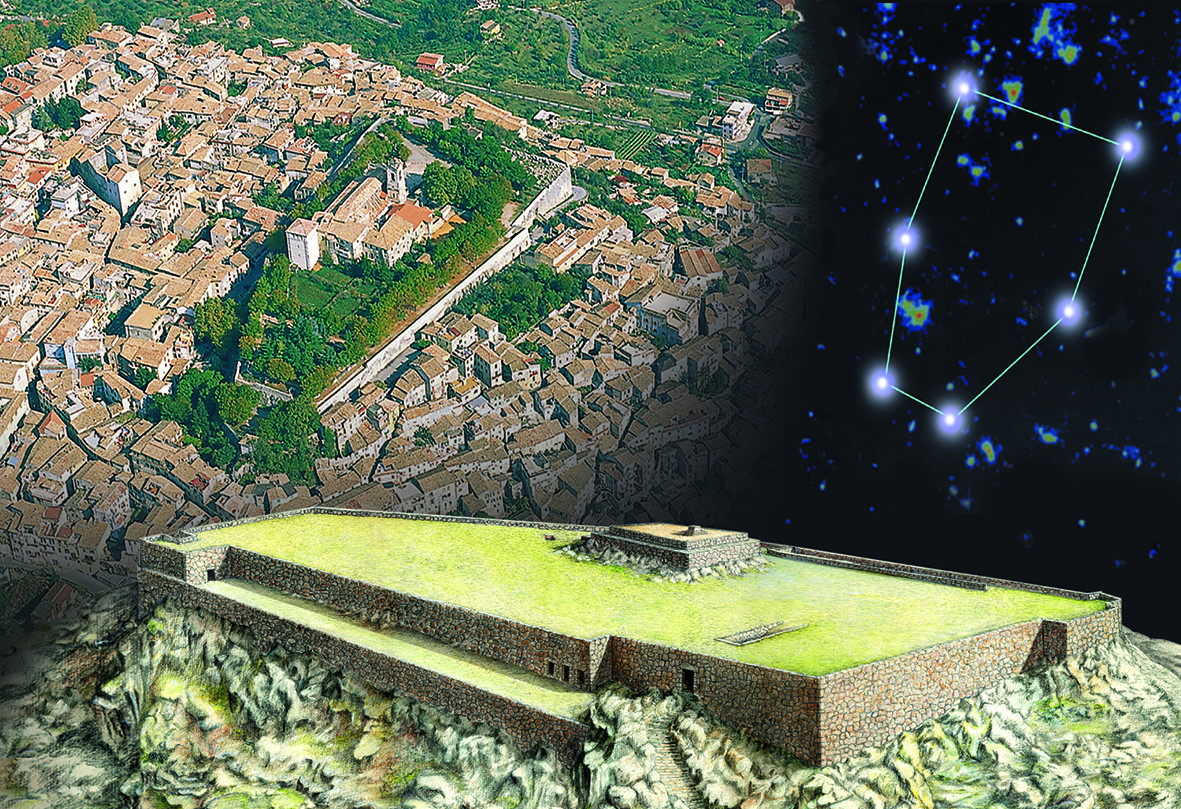
Like the axis of the city, the axis of wall E is aligned with the North Star when this is at 00:00:00 GMT + 1 of 21/09, on the year 1270 ° BCE.
The North-Western wall is aligned with the heliacal values of the sun at dawn on 21 June, while on the opposite side the alignment relating to the heliacal sunset of 21 December can be detected.
The South-Western wall is aligned with a value very close to the heliacal sunset of the sun at the equinoxes.
It is a matter of fact that this level of astronomical, mathematical, and geometrical knowledge, as well as engineering skills, was never reached by the Romans, nor by the Etruscans and the Ernici civilizations.
